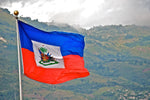
Haiti’s History in 10 Moments That Still Shape the Diaspora
, by Seo Guy , 2 min reading time

, by Seo Guy , 2 min reading time
Haiti history is the connective tissue between homeland and diaspora. It explains how a small Caribbean nation confronted empires, survived pressure, and crafted a modern identity that reaches far beyond its shores. These 10 moments show how revolution, independence, U.S. occupation, and ongoing global struggles still shape Haitian life at home and abroad.
The enslaved rose, and the revolution began—uniting maroons, plantation workers, and free people of color. Years of campaigns culminated in independence in 1804, the world’s first Black republic. In Haiti history, this break wasn’t just political; it was moral—a declaration that human dignity outranks imperial profit. For the diaspora, these events remain the bedrock of pride.
Early leaders tried to secure borders, revive agriculture, and gain recognition. Powerful nations, threatened by Haiti’s example, imposed isolation and indemnities—early global struggles that limited capital and trade. Understanding these headwinds clarifies why migration patterns formed and why the diaspora leaned into mutual aid to fill systemic gaps.
Vodou, rara, and kompa became engines of resilience, turning memory into music and faith into community. Then came the U.S. occupation (1915–1934), which restructured finance, infrastructure, and security on foreign terms. This period in Haiti history still echoes in debates about sovereignty, development, and the balance between stability and self-determination across the diaspora.
Late-20th-century turmoil sparked more emigration. Haitians abroad organized churches, hometown associations, and businesses, sending remittances that sustain families and local economies. These global struggles forged diaspora networks skilled at advocacy—pushing for fair policy, disaster relief, and investment that honors autonomy rather than dependency.
Today’s modern identity blends Kreyòl, French, English, and Spanish; kompa and hip-hop; griot and pizza Fridays. The diaspora turns Haiti history into practice: tutoring in Kreyòl, mentoring entrepreneurs, funding clinics, and voting with transnational awareness. Modernity here is not amnesia—it’s continuity with creativity.
Across Miami, Montreal, Paris, New York, and beyond, the diaspora treats Haiti history as a toolkit. Parents teach the revolution and independence each January 1; scholars unpack the U.S. occupation to understand institutions; organizers face today’s global struggles with lessons from yesterday. This is how a people keep past and future in conversation.
Revisiting Haiti history isn’t about relics—it’s about strategy. Knowing the revolution clarifies courage; knowing independence clarifies duty; studying the U.S. occupation clarifies the costs of imposed order; tracking global struggles clarifies why solidarity must be local and international. A resilient modern identity grows when the diaspora remembers—and then builds.